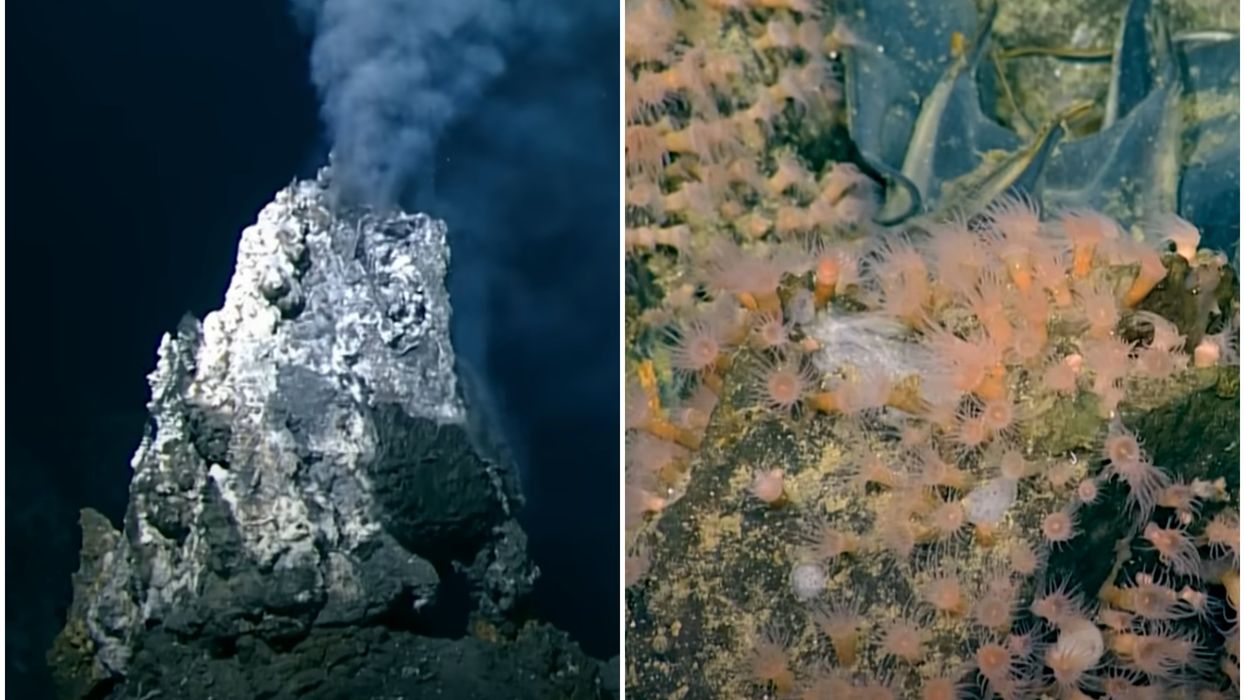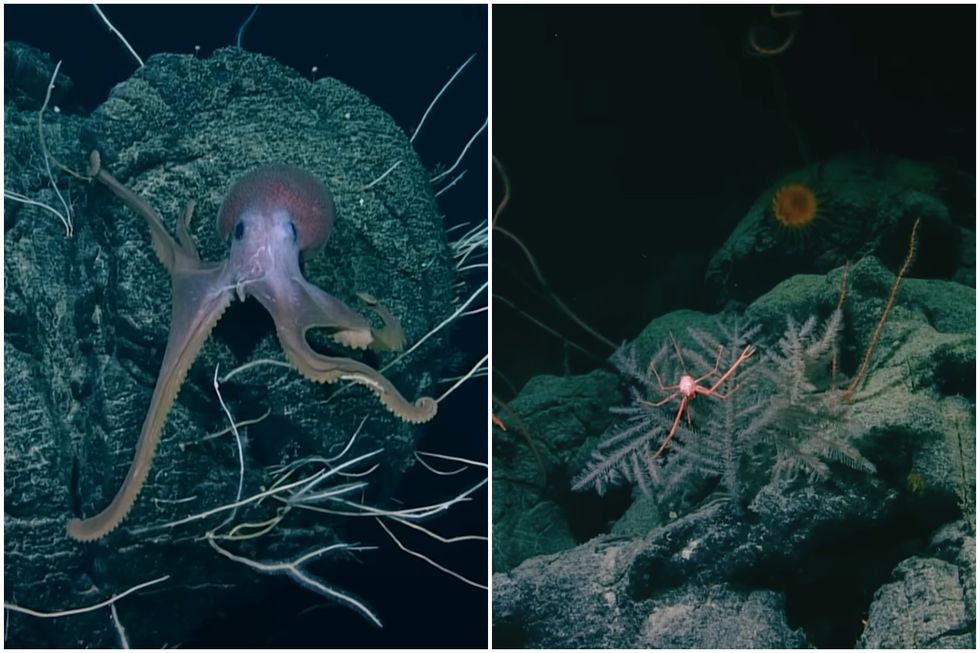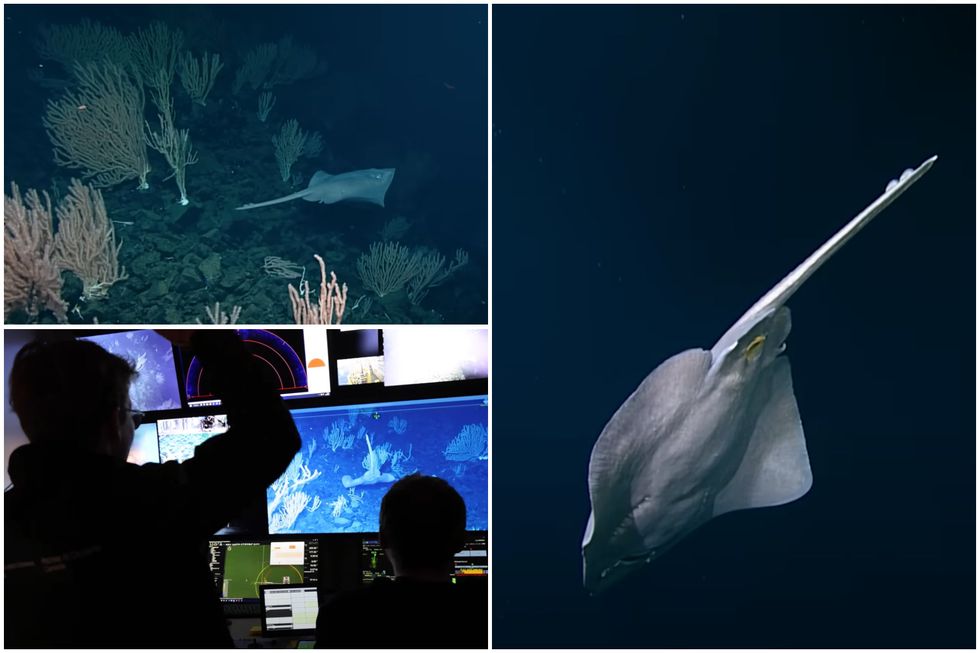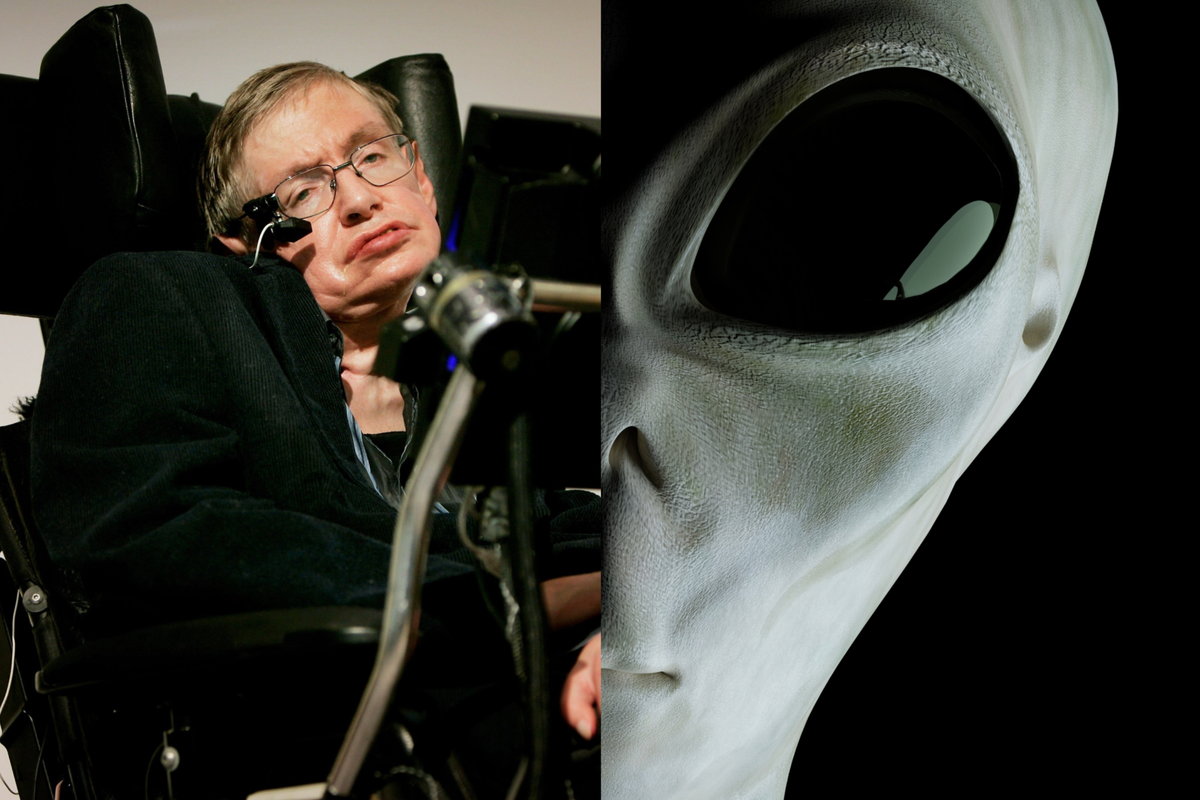Science & Tech
Harriet Brewis
Jun 10, 2025

The seamount was covered in up to 1 million eggs, each one measuring 1.5 feet across
(Northeast Pacific Deep-sea Expedition via Cherisse Du Preez/YouTube)
A team of scientists who set off to analyse what they’d assumed was an extinct volcano were instead greeted by not one, but two jaw-dropping discoveries.
The researchers travelled to the underwater mountain, which lies off the Pacific coast of Canada, and found that not only was it still active but it was also covered in up to a million giant eggs.
The investigators, led by marine biologist Cherisse Du Preez, had expected the waters surrounding the volcano to be icy.
Instead, they saw that the imposing formation, which towers some 1,100 metres (3,600 feet) above the seafloor, continues to spout warm water and is teeming with life.
The hot, mineral-rich liquid it churns out has been keeping things nice and cosy down there, enabling a number of marine creatures to thrive.

Du Preez and her colleagues grew particularly awe-struck when they spotted a Pacific white skate laying eggs on the summit of the mount, nearly one mile (1.5 kilometres) beneath the surface, Live Science reports.
"It's a really special place on top of a really special place," the deep-sea expert told the outlet in an email.
"The only previous finding of a Pacific white skate nursery was in the Galapágos and I think was on the order of a dozen or two eggs."
This newly uncovered volcanic nursery was considerably larger than that, she added, saying: "I'd estimate the summit of the seamount, which was covered in eggs, had — I don’t know — 100,000? A million?"
Du Preez also stressed that the eggs were seriously big, measuring around half a metre (1.5 feet) across.
Pacific white skates are among the deepest-dwelling species of skate, inhabiting depths of between 800 and 2,900 metres (2,600 and 9,500 feet) off the west coast of North and Central America, according to the International Union for Conservation of Nature (IUCN) Red List.
Adult females, which can grow up to two metres (6.5 feet) long, lay rectangular eggs, which are known as "mermaid purses" because they look like little bags, Du Preez said.
Back in 2018, researchers discovered several of these bag-shaped eggs close to hydrothermal vents near the Galapágos Islands, suggesting that mother skates were using the volcanic warmth to incubate their eggs.
The observations made during Du Preez’s latest expedition reinforce this conclusion.

"It takes four years for the young to develop," she told Live Science.
"The warm water likely speeds up the gestation period of the eggs, resulting in more successful juveniles. The shallow summit of the seamount is almost a coral garden and a safe nursery for juveniles to grow before they descend to the deep — it's a win-win."
She and her colleagues will continue to monitor the egg-speckled seamount which, given its current unprotected status, could be under threat from fishing activities.
In a video summary of their two-week investigation at the sight, she said proudly: “Our expedition was unprecedented.
“The discoveries we made and our personal encounters with deep-sea animals have left us speechless.”
This article was first published on December 30, 2023
Why not read...
A chunk of the Earth's crust is missing and scientists have discovered where it is
Half the universe's mass has been discovered, ending a decades-long mystery
Sign up for our free Indy100 weekly newsletter
Have your say in our news democracy. Click the upvote icon at the top of the page to help raise this article through the indy100 rankings
Top 100
The Conversation (0)












